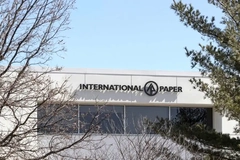Empack 2022: Engilico presents anti-contamination system for rigid formats amid hygiene surge

06 Apr 2022 --- Technology sealing inspection and monitoring company Engilico is showcasing its new HyperScope system at the Empack trade show in Gorinchem, Netherlands. HyperScope is an in-line, 100% seal inspection system using hyperspectral imaging to detect foreign materials or contamination in the sealing area of rigid packages, such as trays, pots and containers.
PackagingInsights speaks with Renaat van Cauter, marketing director at Engilico, for insights on COVID-19 induced hygiene demand and the HyperScope system’s benefits.
“HyperScope technology can be used to detect seal packaging contamination in cheese, meat, sliced meat, prepared foods and everything else that can easily be contaminated through air exposure,” explains Van Cauter.
Hygienic packaging demand
Since the COVID-19 pandemic, van Cauter has taken note of stricter regulation for “healthy packaging and food,” increasing demand for anti-contamination technologies.
He says the company also sees a rising demand for recyclable materials and plastic reduction. Its hyperspectral camera can be used for detecting contaminated seals when packaging in cardboard is used.
Traditionally, van Cauter explains, opposite lighting, shining from below the packaging toward the camera, has been used for detecting packaging contamination. However, such an approach is no longer possible when replacing plastic with cardboard packaging.
“The HyperScope system illuminates packaging from the top, which allows for detecting contamination in cardboard and printed materials,” explains van Cauter. “The HyperScope system illuminates packaging from the top, which allows for detecting contamination in cardboard and printed materials,” explains Van Cauter.
“The HyperScope system illuminates packaging from the top, which allows for detecting contamination in cardboard and printed materials,” explains Van Cauter.
HyperScope system
The HyperScope system consists of a hyperspectral camera, dedicated lighting and controller unit with proprietary software. The system is housed in a stainless steel cabinet and installed over an existing or its own conveyor belt.
“By using a hyperspectral camera, the tray’s sealing area is detected and possible contamination in the sealing area can be detected by the camera. Contamination within the sealing area is detected by the hyperspectral camera and shown by red spots,” van Cauter adds.
The marketing director also explains the hyperspectral camera consists of new technology, looking at the material’s spectral information.
“It moves from visual to near- infrared region, which means the system can deliver a complete material spectrum from every pixel recorded by the camera.”
Relatedly, Schur Flexibles has developed food-grade antibacterial coated films for packaging. The COVID-19 pandemic has accelerated the demand for hygienic packaging and Schur Flexibles responded with a coating that reduces the bacteria present on packaging by 95% – applicable to a wide variety of packaging.
Also, researchers at RMIT University in Australia have created antibacterial material for plastic packaging by mimicking the structure of insect wings. The team says their findings could lead to important strategies for fighting bacterial infections transferred through pharmaceutical and F&B products.
, reporting from Empack 2022, Netherlands
By Natalie Schwertheim











